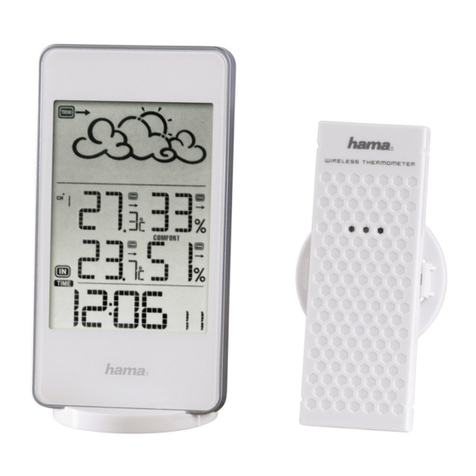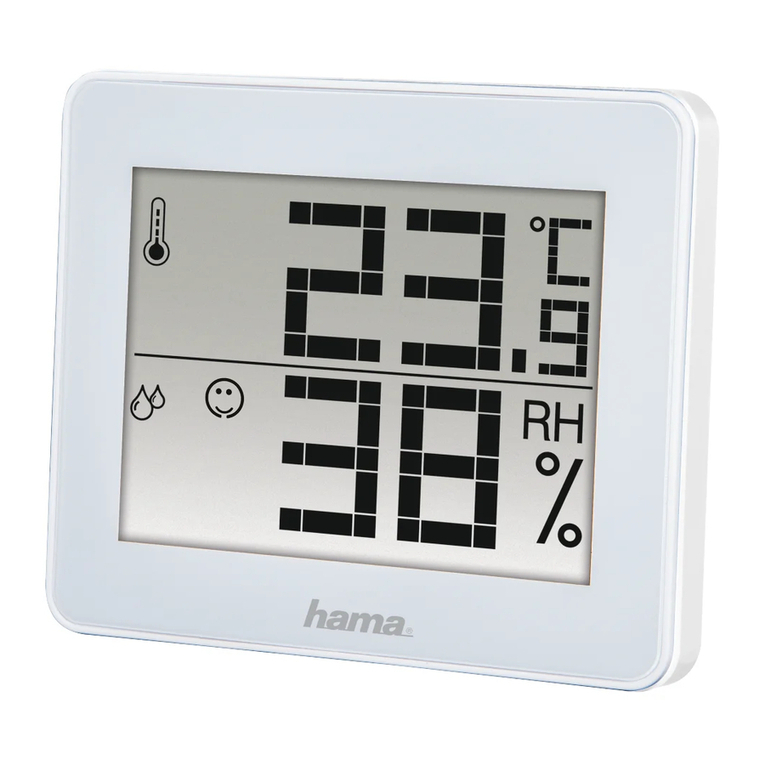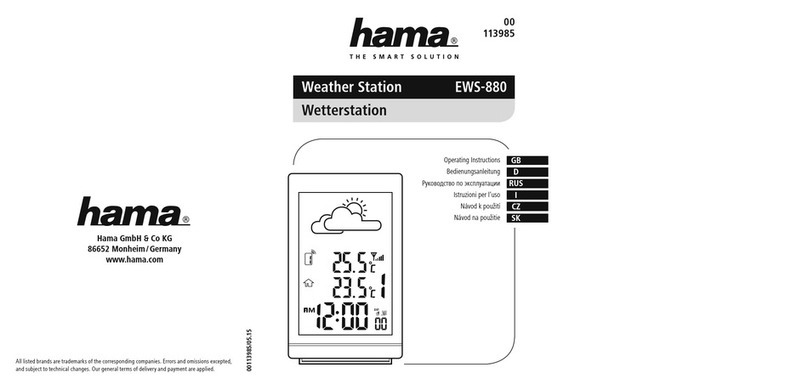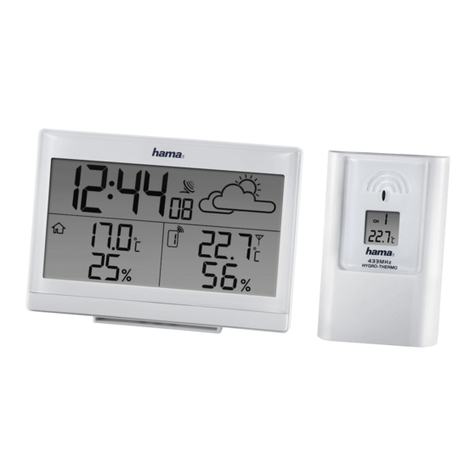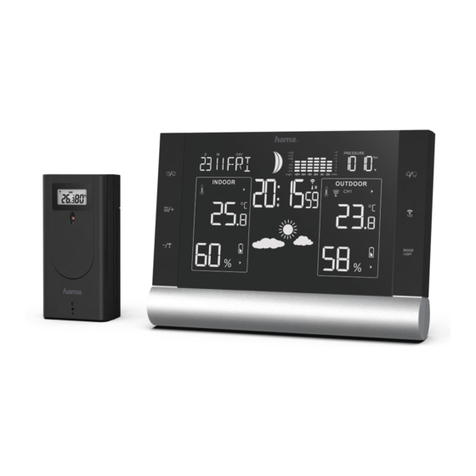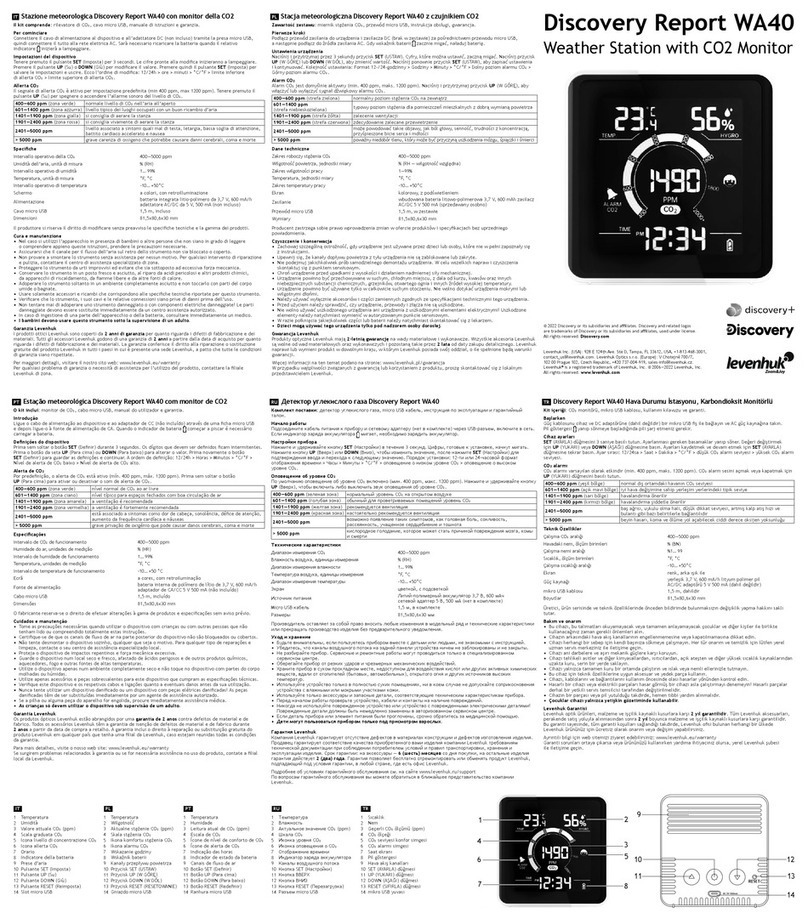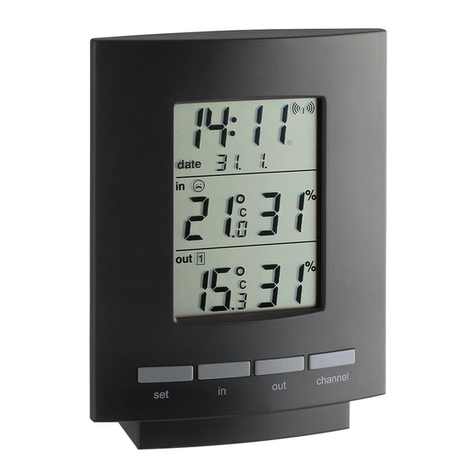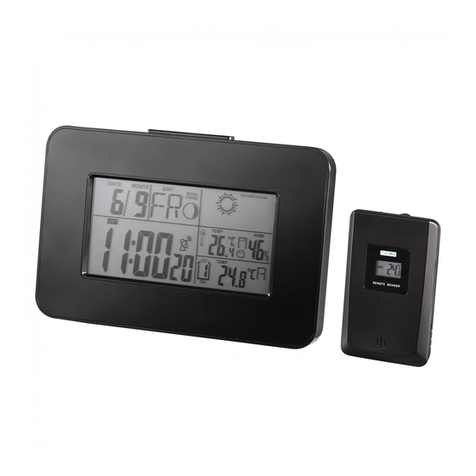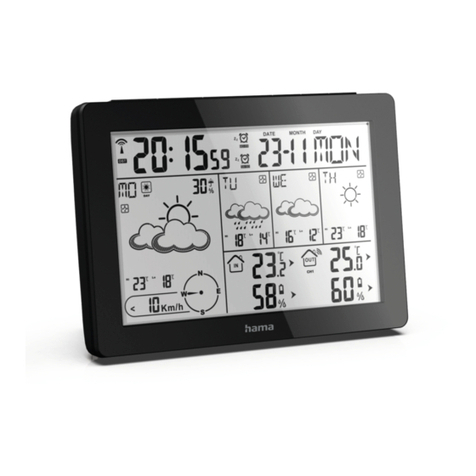
4
Base station
•When the symbol appears, replace the 2 AA batteries
for the base station with 2 new ones.
•Open the battery compartment (B12), remove and
properly dispose of the dead batteries and insert 2 new
AA batteries with the correct polarity. Then close the
battery compartment cover.
5. Installation
Note – Installation
•We recommend initially placing the base and
measuring stations in the intended locations without
installing them and making all the settings described in
6. Operation – to do.
•Only install the stations once the appropriate settings
have been made and a stable wireless connection is
established.
Note
•The wireless transmission range between the
measuring and base stations is up to 50 m in open
spaces.
•Before installation, ensure that wireless transmission
will not be disrupted by interference or obstacles like
buildings, trees, vehicles, high-voltage lines, etc.
•Before the final installation, ensure that there is
sucient reception between the intended installation
locations.
•When installing the measuring station, ensure that it is
protected from direct sunlight and rain.
•The international standard height for measuring air
temperature is 1.25 m (4 ft) above ground.
Warning
•Buy special or suitable installation material from a
specialised dealer for wall-mounting.
•Ensure that no faulty or damaged parts are installed.
•Never apply force during installation. This could
damage the product.
•Before installation, ensure that the chosen wall is
suitable for the weight to be mounted, and make sure
that there are no electrical wires, water, gas or other
lines at the installation site on the wall.
•Do not mount the product above locations where
persons might linger.
5.1 Base station
•Use the base to position the base station on a level
surface.
•Alternatively, you can install the base station on a wall
using the opening (B13) on the back.
5.2 Measuring station
•You can also position the measuring station on a level
outdoor surface.
•We recommend installing the measuring station securely
on an outdoor wall (C8).
•Install an anchor, screw, nail, etc. in the wall of your
choice.
•Hang up the base/measuring station using the opening
(B13/C8) intended for this purpose.
6. Operation
Note – Input
•Hold the button (B4) or the button (B5) to select
the values faster.
6.1 Connection to the measuring station
•After you insert the batteries, the base station
automatically searches for a connection to the measuring
station and performs initial setup.
Note
•Initial setup takes approximately 3 minutes.
•During the connection attempt, the radio symbol on
the measuring station (A12) will flash.
•Do not press any buttons during setup. Otherwise,
values may not be transmitted correctly and there is a
risk of value errors and inaccuracies.
•The setup process is completed when the indoor
and outdoor measurement data (A1/A2/A8/A10) is
displayed.
•If the base station still does not receive a signal from
the measuring station, press and hold the button (B5)
for approx. 3 seconds to start the manual search for the
signal.
Note – Faulty transfer of measured values
•In isolated cases, interference - e.g. from a WLAN
network, a computer or a television set - can cause the
transfer of measured values between the measuring
station and the base station to fail.
•In this case, you must resynchronise the stations by
briefly removing the batteries from both stations and
reinserting them.
•If the measured values are not transferred again once
the batteries are inserted, replace the batteries with
new ones.
•If necessary, select a new location for the base station
in order to avoid possible interference in the future.










